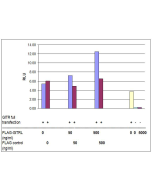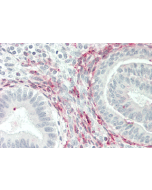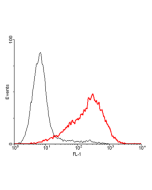Cookie Policy: This site uses cookies to improve your experience. You can find out more about our use of cookies in our Privacy Policy. By continuing to browse this site you agree to our use of cookies.
AdipoGen Life Sciences
GITR (human):Fc (human) (rec.)
As low as
385
CHF
CHF 385.00
In stock
Only %1 left
AG-40B-0028-C05050 µgCHF 385.00
AG-40B-0028-30503 x 50 µgCHF 770.00

| Product Details | |
|---|---|
| Synonyms | Tumor Necrosis Factor Receptor Superfamily Member 18; Glucocorticoid-induced TNFR-related Protein; CD357; TNFRSF18; AITR; Activation-inducible TNFR Family Receptor |
| Product Type | Protein |
| Properties | |
| Source/Host | HEK 293 cells |
| Sequence |
Human GITR (aa 26-162) is fused at the C-terminus to the Fc portion of human IgG1. |
| Crossreactivity | Human |
| Specificity |
Binds to human GITRL. |
| MW | ~48kDa (SDS-PAGE) |
| Purity | ≥95% (SDS-PAGE) |
| Endotoxin Content | <0.01EU/μg purified protein (LAL test; Lonza). |
| Concentration | 1mg/ml after reconstitution. |
| Reconstitution | Reconstitute with 50μl sterile water. |
| Formulation | Lyophilized. Contains PBS. |
| Protein Negative Control | |
| Other Product Data |
UniProt link Q9Y5U5 GITR (human) |
| Shipping and Handling | |
| Shipping | BLUE ICE |
| Short Term Storage | +4°C |
| Long Term Storage | -20°C |
| Handling Advice |
After reconstitution, prepare aliquots and store at -20°C. Avoid freeze/thaw cycles. Centrifuge lyophilized vial before opening and reconstitution. PBS containing at least 0.1% BSA should be used for further dilutions. |
| Use/Stability |
Stable for at least 6 months after receipt when stored at -20°C. Working aliquots are stable for up to 3 months when stored at -20°C. |
| Documents | |
| MSDS |
 Download PDF Download PDF |
| Product Specification Sheet | |
| Datasheet |
 Download PDF Download PDF |
Description
GITR (Glucocorticoid-induced TNF receptor) is the receptor for TNFSF18. It is involved in interactions between activated T-lymphocytes and endothelial cells and in the regulation of T cell receptor-mediated cell death. GITR serves as a negative regulator for NK cell activation. It mediates NF-κB activation via the TRAF2/NIK pathway.











